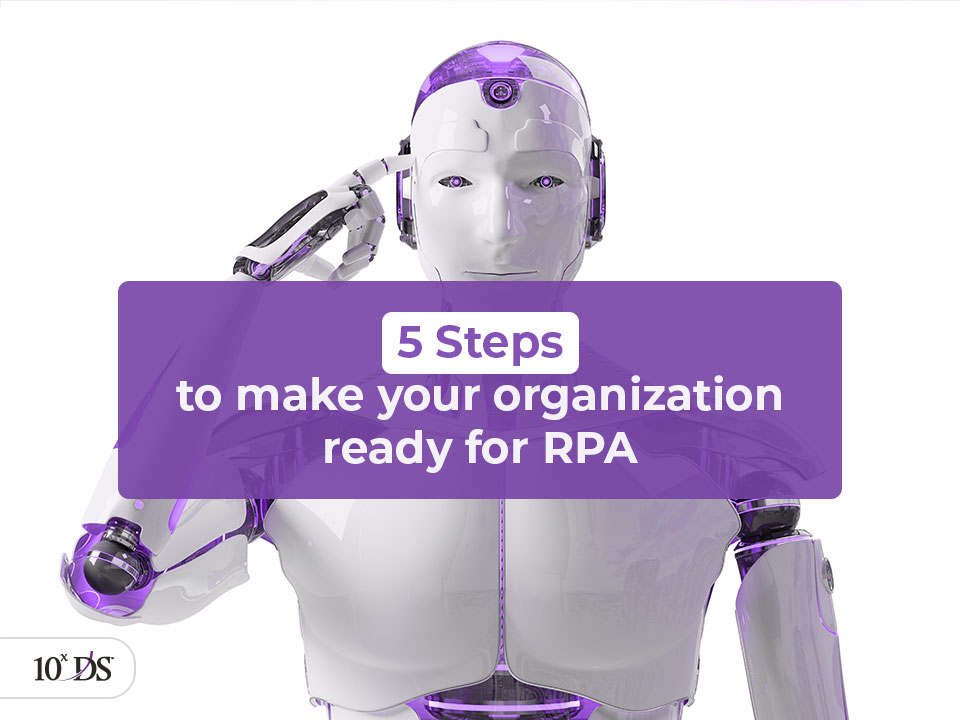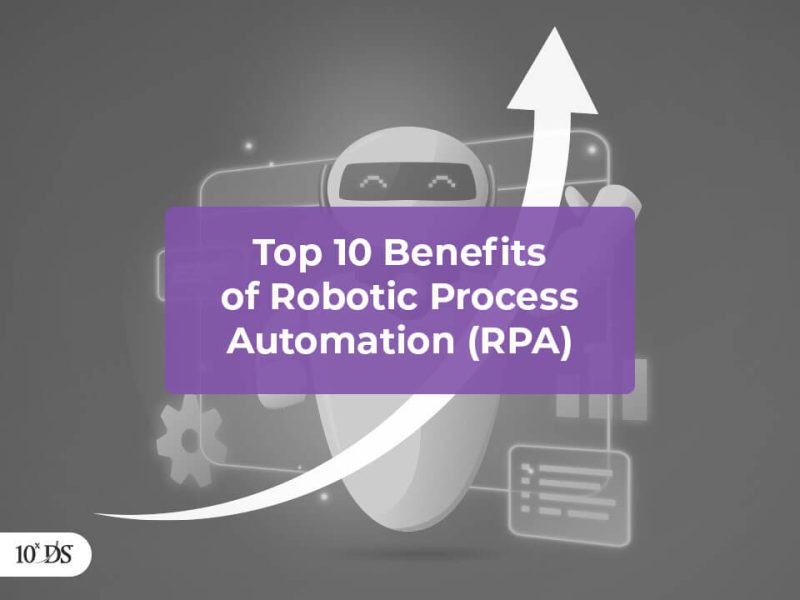
5 Steps to make your organization ready for RPA
A couple of years ago, Robotic Process Automation (RPA) was just another concept hovering around in enterprise boardrooms where the maximum attention it grabbed could result in some POC’s be built and presented at conferences and investor summits. But today, the scenario has changed drastically. Forrester undertook a study of some of the leading industry players in terms of operational excellence. Over 45% of the survey respondents have already implemented RPA and are in the process of advancing it across the length and breadth of their business operations. 30% of the remaining respondents have plans for an upcoming RPA implementation over the next couple of months.
Some of the world’s best companies have already automated some of their key operations departments like accounting, reporting, finance and much more. RPA will be on your drawing boards soon as well but is your organization ready for it?
There is a checklist you need to follow before going in for an all-out implementation of RPA within your organization. Let’s have a closer look at the 5-steps to make your business ready for RPA.
1. Take your employees into confidence
From time immemorial, the journey of automation has faced stiff resistance from the human workforce largely because they perceive it as a threat to their livelihood. The first thing you need to do to make your organization ready for RPA is to convince your workforce that RPA is not a job killer. You need to educate staff about how RPA can make their jobs easier by allowing them to do more meaningful tasks that drive real value while redundant operational tasks can be handled by machines. The only flipside is that, moving forward, there will not be much demand for folks to do low-key jobs like data entry or accounts tallying, etc.
2. Find the P’s in RPA
Now that the workforce is on your side, the next step is identification of processes that can be switched over to an RPA enabled automated one. The best place to start looking is in your finance department where you will find hundreds of redundant data entry tasks being executed by staff on any given day. Nevertheless, other departments too can have considerable levels of redundancy with regards to certain jobs. Your aim should be to find out processes that virtually do not require intense thought processes for execution. These can be the best candidates for moving onto an RPA platform and the human workforce engaged in these tasks can be moved to higher jobs within your organization. It is imperative to have your IT department work closely with the identification exercise. Of all the departments, they would be able to pick out the most desired and prioritized business functions into which automation technology like RPA can be easily implemented for fast results.
3. Transform into a lean process driven organization
Once the processes to be automated have been identified, it is time to eliminate, club and organize them to ensure that your core businesses can be run free of disruption with as low number of processes as possible. There could be processes that do not serve any significance in how your business aspires to operate tomorrow and these can be scrapped straight away. The remaining processes needs to undergo a thorough analytical observation to see if dependent processes can be clubbed or re-arranged to ensure optimal value generation. Many of them can be combined to reduce the complexity involved in automating a business function.
4. Assign Change Leaders
RPA when implemented will challenge quite a lot of status quo within the length and breadth of an organization. In addition to taking your workforce into confidence as said in the first point, it is vital to appoint enthusiastic spokespersons within each department of your business. These folks will be the torchbearers of the entire exercise and can positively influence others to take the initiative to support the implementation. Start with POC’s to demonstrate the value offering to this set of employees. Seek their help to scale up the effort across departments and business functions they represent within the organization. This step would ideally enable a conflict free and well coupled approach from the workforce side to assist with automation exercises.
5. Set up a feedback chain
While the ROI of an RPA exercise may start to reflect in as less as 6 months after the implementation, you should have a clear understanding of the metrics that need to be measured and analyzed to gauge the success of your association with RPA. Have a feedback mechanism devised to aggregate information pertaining to critical RPA claims such as performance improvements, reduction in cost, increased compliance to processes, significantly lower error rates, etc. Once the implementation has gone live, ensure to collect this feedback to measure the success rate of your implementation. Take lessons from it to scale your RPA initiatives into an enterprise wide transformational change.
Conclusion
Having a well laid out plan to reign in RPA into your business is essential today. Any mistake can prove to be very costly and make RPA a negative sentiment for the very business functions it was scheduled to improve. Ensure that you have a trusted advisory to lead the way in RPA implementation no matter what domain you operate out of.
Want to gain further insights into our services and solutions or if you are looking to jumpstart your Digital Transformation journey, talk to our experts!


